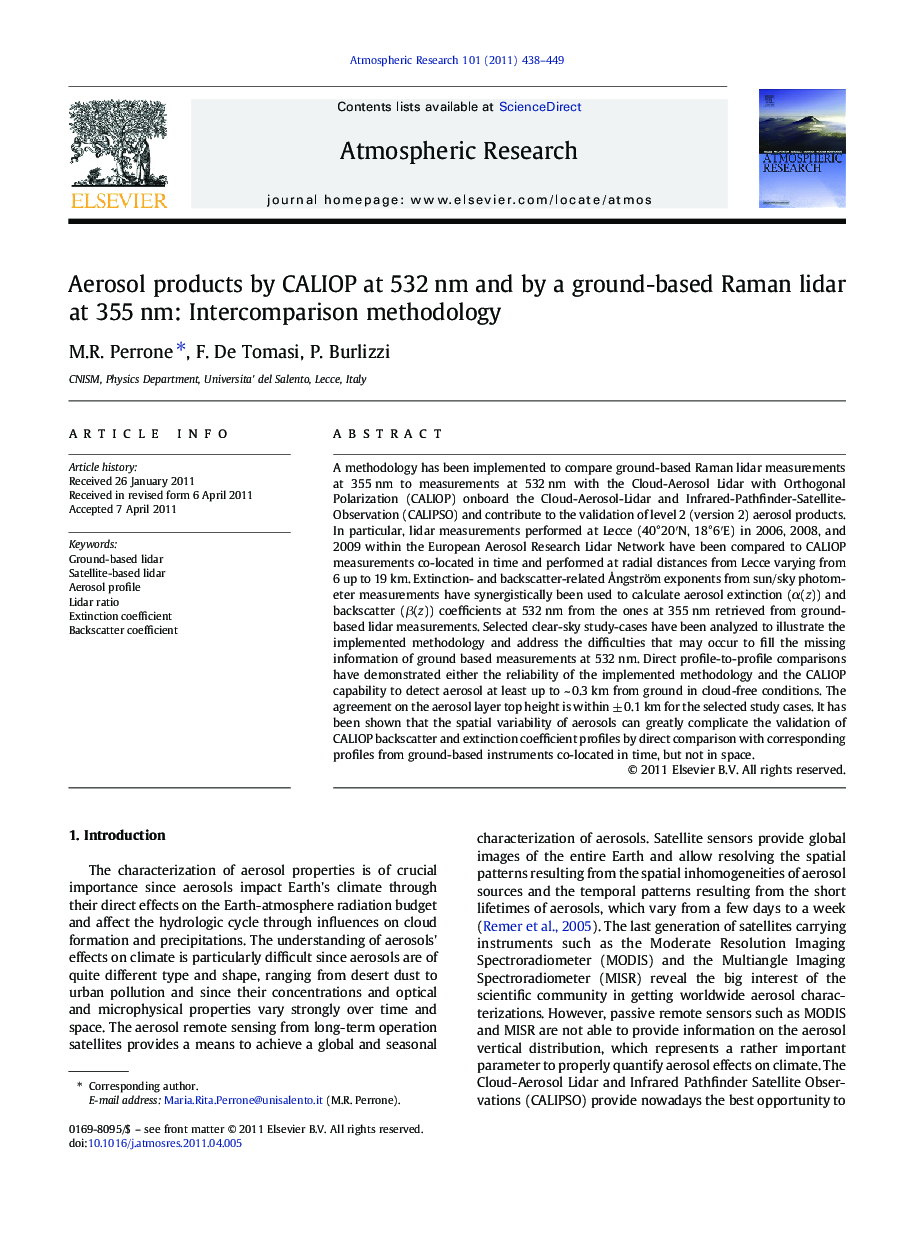| Article ID | Journal | Published Year | Pages | File Type |
|---|---|---|---|---|
| 4450457 | Atmospheric Research | 2011 | 12 Pages |
A methodology has been implemented to compare ground-based Raman lidar measurements at 355 nm to measurements at 532 nm with the Cloud-Aerosol Lidar with Orthogonal Polarization (CALIOP) onboard the Cloud-Aerosol-Lidar and Infrared-Pathfinder-Satellite-Observation (CALIPSO) and contribute to the validation of level 2 (version 2) aerosol products. In particular, lidar measurements performed at Lecce (40°20′N, 18°6′E) in 2006, 2008, and 2009 within the European Aerosol Research Lidar Network have been compared to CALIOP measurements co-located in time and performed at radial distances from Lecce varying from 6 up to 19 km. Extinction- and backscatter-related Ångström exponents from sun/sky photometer measurements have synergistically been used to calculate aerosol extinction (α(z)) and backscatter (β(z)) coefficients at 532 nm from the ones at 355 nm retrieved from ground-based lidar measurements. Selected clear-sky study-cases have been analyzed to illustrate the implemented methodology and address the difficulties that may occur to fill the missing information of ground based measurements at 532 nm. Direct profile-to-profile comparisons have demonstrated either the reliability of the implemented methodology and the CALIOP capability to detect aerosol at least up to ~ 0.3 km from ground in cloud-free conditions. The agreement on the aerosol layer top height is within ± 0.1 km for the selected study cases. It has been shown that the spatial variability of aerosols can greatly complicate the validation of CALIOP backscatter and extinction coefficient profiles by direct comparison with corresponding profiles from ground-based instruments co-located in time, but not in space.
► Results on the validation of level 2-version 2 CALIOP products at 532 nm. ► Intercomparison of aerosol profiles by CALIOP and a ground-based lidar at 355 nm. ► Extinction and backscatter coefficients at 532 nm from the ones at 355 nm. ► Effects of the aerosol spatial variability on the validation of CALIOP products.
